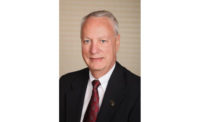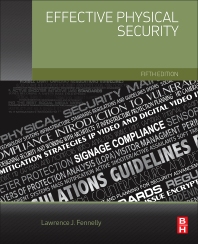The Physical Security Interoperability Alliance (PSIA), a global consortium of physical security providers headquartered in Santa Clara, Calif., and focused on promoting the interoperability of IP-enabled devices, has elected Larry Lien of Proximex of San Jose. Calif., as its new chairman and Marine Drive of Honeywell Security Group of Melville, N.Y., as vice chairman.
“We are pleased to have two extremely strong individuals help lead our initiatives and serve as advocates for interoperability in the security industry,” said David Bunzel, executive director, PSIA. “The combined business and technical expertise from Larry and Marine will allow the PSIA to maintain momentum in achieving widespread market adoption of the group’s specifications.”
“The PSIA has demonstrated that a complete systems approach is the best way to meet the critical need for industry standards,” says Lien. “As global organizations require more integrated security environments, there is a greater demand for open standards that facilitate communication between systems, not just devices, for fast implementation and correlation of critical information. I see many important opportunities available for Marine and I to help raise the level of awareness and speed market adoption of the PSIA specifications. Better systems-level standards will advance the functionality and interoperability between systems to improve the end user experience and allow faster integration of disparate systems.”
As vice chairman, Drive will help vendors define the business case and migration strategies needed to adopt and implement the PSIA integration standards. “PSIA has been successful in rapidly developing specifications because of its open and collaborative process,” comments Drive. “The group’s commitment has laid the groundwork for truly interoperable specs and products. I am looking forward to working with Larry and the rest of the PSIA team to help accelerate these efforts.”
Drive, global director of integration for Honeywell Security Group and a 12-year company veteran, played an instrumental role in authoring the PSIA Area Control standard and leading an integrated demonstration of the PSIA system specifications along with several other companies at ISC West 2011.
Today’s System Integrator conducted an interview with both Larry Lien and Marine Drive.
What will the focus for PSIA be in the next year?
Lien – “Continue to develop standards that provide more end user value. From the beginning, PSIA focused on providing end users with a better integration experience that would also reduce associated costs as well as total cost of ownership. PSIA developed its standards based on customer use cases and best practices that integrate multiple systems, such as alarming, access control, video and video analytic systems, into holistic solutions. We believe that system level standards improve the overall integration experience because this process leverages applications commonly used by customers. We will continue to deliver standards that provide more value to the end user which will, in turn, drive the adoption of these standards by manufacturers.”
Concerning educating the market, “The industry is now paying attention to the standards topic. During the next year, PSIA will offer more educational opportunities about its standards and their benefits to organizations. This includes more marketing programs, educational series and testimonials from customers, specifiers and manufacturers. Outreach and continued communications of business benefits will also create awareness and drive adoption.”
Concerning membership and adoption, says Lien, “Today, PSIA has great involvement and support from industry system leaders that see tremendous value in interoperability, including Tyco, Honeywell, UTC, Schneider, Cisco and many others. We will continue to promote manufacturer memberships as well as encourage more involvement from end user customers, specifiers and integrators.”
How long have you been involved with PSIA and what prompted you to?
Lien – “This is my first direct experience with PSIA. However, I’ve followed the organization closely during the past few years. I see a natural fit as the PSIA’s goals and vision closely align with my expertise and industry experience. At Proximex, a PSIM vendor, one of my primary responsibilities is working closely with vendors to integrate our Surveillint solution with different technologies and systems. Through this process, I intimately understand the integration needs of technology partners, customers, integrators and specifiers, and, interestingly, many recent conversations have revolved around defining standards and obtaining broader customer adoption.
“I believe PSIA has the right vision and industry support to affect this change. With my system integration experience, I can help provide best practices and lessons learned for an immediate, positive impact on the industry. As customers become more IT-savvy and want to adopt new open technologies, standards will become an intricate part of this transformation. PSIA has the strong vision, industry leadership and adoption plan required to succeed.”
Drive – “Honeywell has a long association with PSIA and driving standards is important to my job because I lead the integration efforts globally for Honeywell Security to work with peer companies, suppliers, customers and the wider market. There has been a steep rise in the demand for capabilities such as interplay between multiple security products, convergence between physical and logical security, and linkage of security products into customer business processes. As a result, open standards is a critical part of the overall security equation. But open standards means more than being a technology ‘glue’ of protocols; it must be able to translate into more opportunities, productivity and cost benefits. I believe PSIA has taken the right approach to derive the specifications from the systems and customer use cases, in contrast to a ‘protocol’ suite.”
Steve Van Till of The Electronic Security Association (ESA) recently wrote a paper on “standards harmony” (See article at SDMmag.com). Do you have a comment?
Drive – “Standards, as I described earlier, need to offer a real value to the customer, and not just be a ‘suite of protocols.’ Integration and interoperability, however, mean different things to different people in different industries. I don’t think a single standard will be able to address all use-cases from its prime play perspective. This is where interoperability between various standards organization becomes key, and Steve Van Till has rightly pointed it out.”






